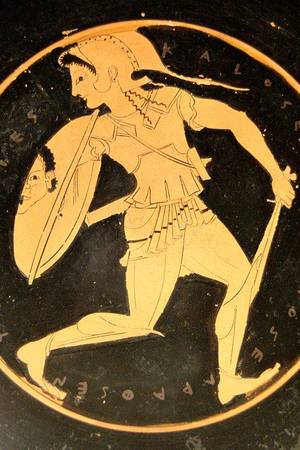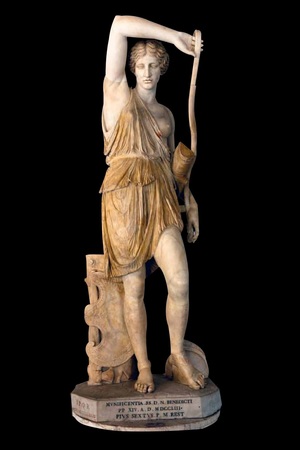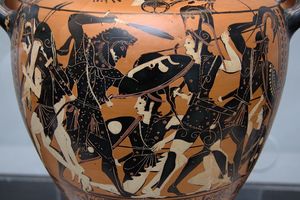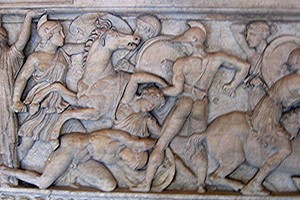Amazons
The Amazons (Ancient Greek: ἀμαζόνες) were, in Greek mythology, a nation of warrior women who lived in a separate, matriarchal society without men. According to legend, the Amazons were descendants of Ares, the god of war, and Harmonia. To continue their lineage, Amazons engaged in relations with men from other tribes and cities. According to one version of the myth, male offspring were either sent back to their fathers or killed, while the female children were raised as new Amazons.
The term "Amazons" originates from the Ancient Greek ἀμαζός, meaning "breastless." However, this word is likely meant to be interpreted metaphorically, signifying the Amazons' distinction from ordinary women and their rejection of male authority. Myths tell that Amazons burned off their right breast in childhood to make it easier to shoot arrows, but in reality, it is more likely that they wore a very tight strophium (a type of ancient bra), which suppressed breast growth.
In 2019, the tomb of Amazons wearing gold royal crowns was discovered in the western part of Voronezh Oblast, Russia. This discovery raised more questions than it answered. The women found in the burials are considered to be of Scythian culture.
 Attic sarcophagus depicting scenes of Greeks battling Amazons. Marble. Thessaloniki, Archaeological Museum. 220–230 AD.
Attic sarcophagus depicting scenes of Greeks battling Amazons. Marble. Thessaloniki, Archaeological Museum. 220–230 AD.
Myth or Reality?
According to myth, the Amazons lived on the banks of the Amazon River, which is now called Yeşilırmak. Some historians believed that the tribe inhabited the region where the modern Turkish cities of Amasya and Samsun are located. From there, the Amazons conducted expeditions into Asia. Myths also say that Amazons founded the ancient cities of Ephesus and Smyrna, and there is evidence of the tribe’s presence in areas ranging from Euboea and Boeotia to the Don River and the Caspian Sea.
Plutarch reported that the Amazons lived along the Caucasus mountain range near the Caspian Sea, with their territory stretching from the mouth of the Kura River to the Samur River, and at certain times reaching as far as Derbent. He also noted that the Amazons were not direct neighbors of the Albanians, Gelonians, and Legoi tribes.
Professor I. E. Surikov proposed the theory of the "receding Amazons," suggesting that they gradually moved farther away from the center of the Hellenic world as the Oikoumene (the known world) expanded. Doctor of Historical Sciences M. V. Skrzhinskaya observed the evolution of the Amazonian image in antiquity, from the short Greek chiton to embroidered costumes with Scythian weapons.
Homer wrote about wars between Bellerophon and the Phrygians against the Amazons. According to one version of the myth, the queen of the Amazons, Hippolyta (also identified with Antiope), was killed by Heracles, who was tasked by Eurystheus with taking her belt, a gift from Ares. Other legends tell of Theseus marrying Antiope, which provoked the Amazons into invading his domain in Attica. Plutarch mentioned that the warrior women crossed the Cimmerian Bosphorus on ice and marched towards Attica. After a failed four-month war with Theseus, the Amazons returned to their homeland.
Under the leadership of Queen Penthesilea, the Amazons frequently fought against the Greeks and, alongside the Trojan king Priam, defended Troy from their attacks. One of the later mentions of the Amazons involves their queen, Thalestris, who is said to have visited Alexander the Great.
The myths of the Amazons became deeply embedded not only in poetry but also as a subject in Greek and later Roman visual arts. The Amazons were often celebrated, and ancient women warriors were named after them. For example, a bas-relief has been found depicting two gladiatrices, one of whom was named Amazon.
Whether the Amazons truly existed remains uncertain. Written and visual sources suggest their existence, pointing to both mythical and historical figures. Ancient depictions of Amazonian military campaigns, such as their invasion of Attica, have been found. Additionally, there are possible Amazonian burials that have been uncovered. Supporters of the Amazons' historical existence claim that the last historical mention of them dates back to the reign of Alexander the Great. Opponents argue that the Amazons are purely mythological. Regardless, the influence of the Amazons on ancient culture and art is undeniable.
Related topics
Ancient Greece, Gladiatrix, Strophium

 Gallery
Gallery






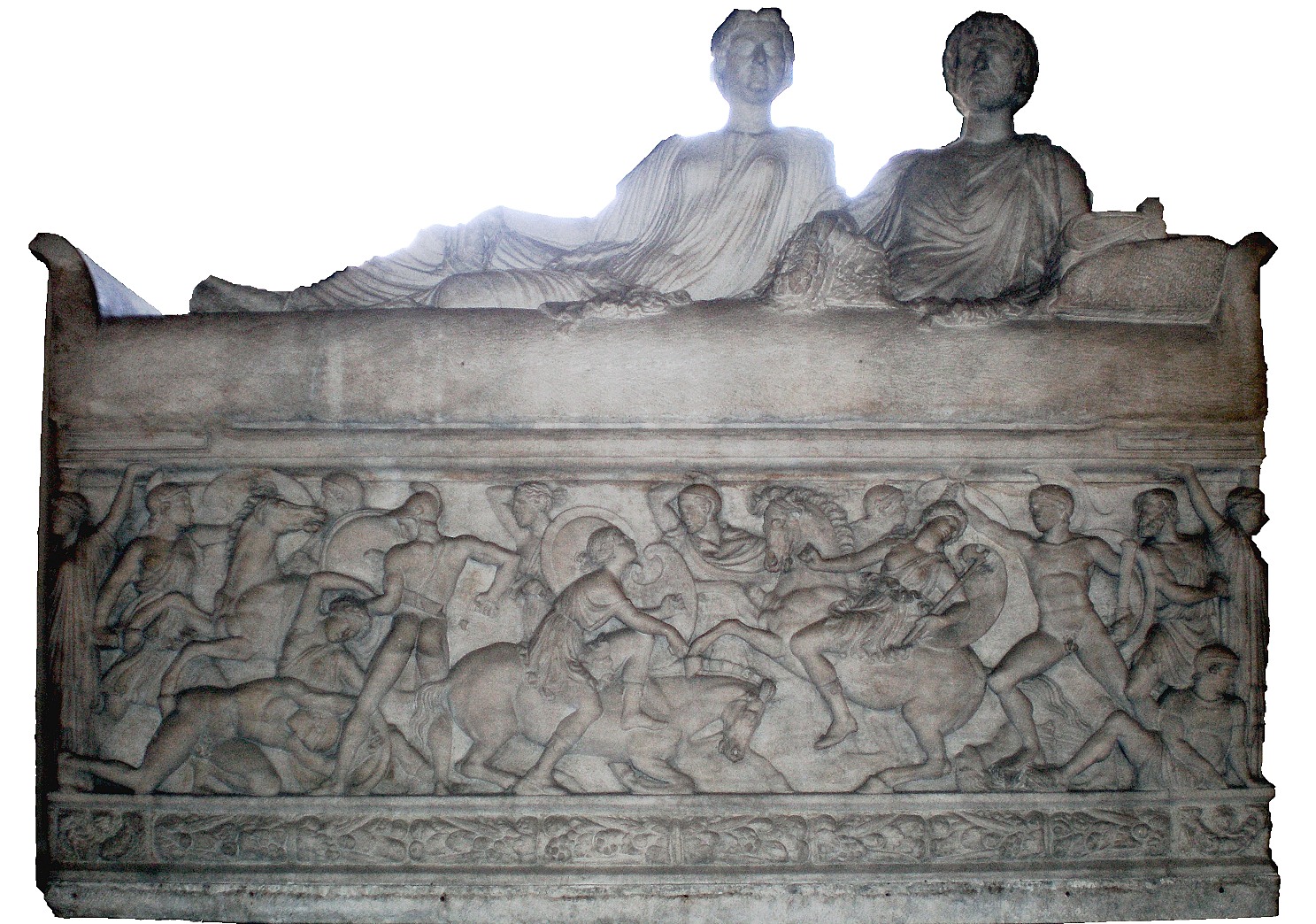 Attic sarcophagus depicting scenes of Greeks battling Amazons. Marble. Thessaloniki, Archaeological Museum. 220–230 AD.
Attic sarcophagus depicting scenes of Greeks battling Amazons. Marble. Thessaloniki, Archaeological Museum. 220–230 AD.
